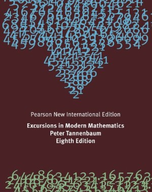Consider the following method for dividing a continuous asset S among three players
Chapter 3, Problem 62(choose chapter or problem)
Consider the following method for dividing a continuous asset S among three players: Step 1. Divider 1 (D1) cuts S into two pieces s1 and s2 that he considers to be worth, 1 3 and 2 3 of the value of S, respectively. Step 2. Divider 2 (D2) gets a shot at s1. If he thinks that s1 is worth 1 3 of S or less, he can pass (case 1); if he thinks that s1 is worth more than 1 3, he can trim the piece to a smaller piece s11 that he considers to be worth exactly 1 3 of S (case 2). Step 3. The chooser C gets a shot at either s1 (in case 1) or at s11 (in case 2). If she thinks the piece is a fair share, she gets to keep it (case 3). Otherwise, the piece goes to the divider that considers it to be worth 1 3 (D1 in case 1, D2 in case 2). Step 4. The two remaining players (D2 and C in case 1, D1 and C in case 2, D1 and D2 in case 3) get to divide the remainder (whatever is left of S) between themselves using the divider-chooser method. Explain why the above is a fair-division method that guarantees that if played properly, each player will get a fair share.
Unfortunately, we don't have that question answered yet. But you can get it answered in just 5 hours by Logging in or Becoming a subscriber.
Becoming a subscriber
Or look for another answer
